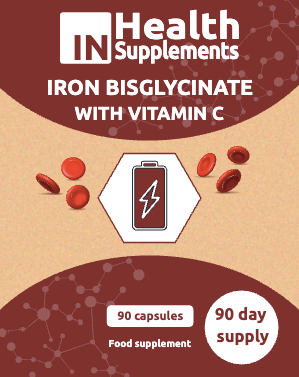As we move further into 2025, we have so much more here at ACN we will bring to the clinical table to get our mutual patients better results.
One of them is functional blood testing, and the website is being built now, sadly these things always take longer than expected and, frankly, I am colossally impatient.

It is optimal ranges versus the black and white standard medical labs.
Optimal ranges for results refer to the values that are considered ideal for good health and may help to prevent disease.
These values may be narrower than the standard ranges, and they are based on research that suggests that certain health outcomes are associated with particular levels of specific blood markers.
Optimal ranges may differ depending on the individual’s age, sex, and health history.
On the other hand, standard ranges for results are the values that are considered “normal” for most people, based on statistical analysis of a large group of healthy individuals.
These ranges are used as a reference to determine whether a patient’s test results fall within the expected range for their age, sex, and overall health.
Falling outside the ranges infers disease or significant illness/dysfunction.
Standard ranges are typically wider than optimal ranges, as they take into account a broader range of health conditions and genetic variations.
If we take the example of iron, we have serum iron which the amount of circulating iron in the blood that is bound to transferrin, the main iron-transport protein.
It reflects the level of iron that is immediately available for use in the body—such as for red blood cell production, enzyme activity, and other metabolic needs.
Then we have iron reserves/storage, which is called FERRITIN.
Ferritin is a protein that binds iron and stores it for later use and to stop free iron circulating, which is very reactive and inflammation/damage inducing via the FENTON reaction.

Ferritin is the most reliable early indicator of iron deficiency, especially when hemoglobin is still normal.
It should be routinely checked in patients with unexplained fatigue, cognitive changes, thyroid symptoms, or chronic illness.
THUS:
What Ferritin Tells Us:
Low Ferritin = Low iron stores
Often the earliest and most sensitive marker of iron deficiency—can drop well before anemia develops.
Normal Hemoglobin + Low Ferritin = Non-anemic iron deficiency (NAID)
Iron’s biological significance extends far beyond red blood cell formation.
It plays a crucial role in numerous enzymatic processes fundamental to human physiology—particularly those related to energy production, thyroid function, and neurotransmitter synthesis.
Importantly, subclinical iron deficiency—before the onset of anemia—can significantly disrupt these functions, leading to a host of physiological impairments even when hemoglobin levels remain within normal ranges.
REMEMBER the NHS generally views IRON through the LENS OF ANAEMIA, and so will take little interest in most cases until they are below 15 ug/L, sometimes a bit lower, sometimes a bit higher.
Their point of reference for fatigue is anaemia, thus if you are not low haemoglobin, your iron must be fine.
Note, the idea of iron being low in absence of anaemia and casuing symptoms is in all the NHS labs guidance, but it does seem to be largely ignored.
Example:


We want our FERRITIN to be between 50-100 ug/L, no more as this causes a plethora of issues.
Re-Remember here ????

But if it is below 50 ug/L we want it up and the best food for that is liver and red meat, as it contains HEME IRON, which is far superior to non-heme iron found in plants.
If you can’t get it up due to diet issues or poor absorption from gut issues or medications like proton pump inhibitors, then you can use IRON BISGLYCINATE, which needs no conversions and has high absorption.
x1/1-3 daily

Why do they get symptoms?
In your brain, if you want to make serotonin, you need iron as a co-factor for enzymes.

Dopamine which makes noradrenaline or adrenaline you need iron as a co-factor for enzymes.

If you want to make thyroid hormones you need iron.
Thyroid Peroxidase (TPO) is an iron-Dependent Enzyme
TPO is essential for iodide oxidation to iodine, the number in T4 and T3 relates the number of iodines on it, less IODINE, less T4 and less T3.
Krebs cycle, if you want run smooth you need iron

And in the electron transport chain as well.

